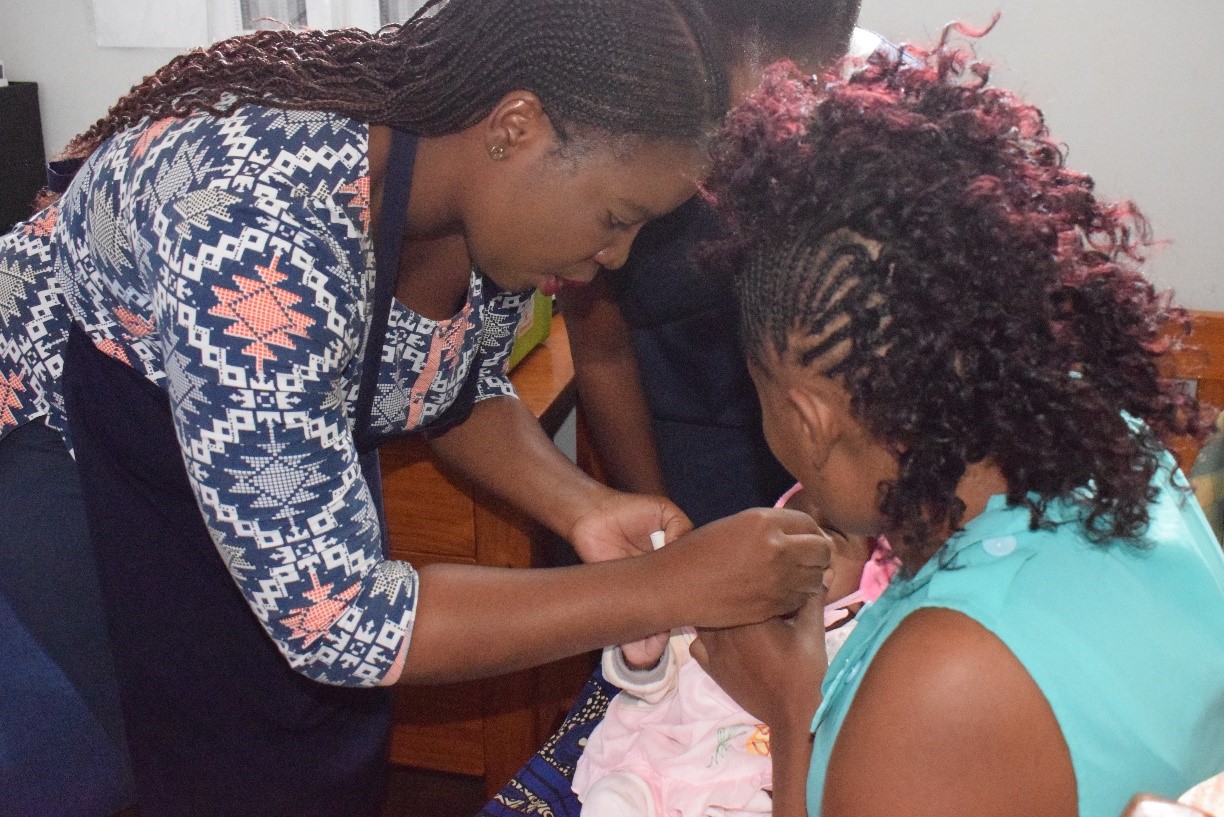
An easier-to-use ROTAVAC works well in Zambia

Rotavirus vaccines are recommended by the World Health Organization (WHO) as the best way to prevent rotavirus, the leading cause of severe and deadly diarrhea in young children worldwide. A new rotavirus vaccine from Bharat Biotech, India—ROTAVAC 5D—is a liquid formulation of its existing frozen rotavirus vaccine, ROTAVAC, which is prequalified by the World Health Organization (WHO). Already licensed in India, ROTAVAC 5D can be stored at standard refrigeration temperatures and does not require a buffer, thus facilitating easier storage, transport, and administration.
In order to provide evidence of this vaccine’s performance in a high-burden population outside of India, PATH conducted a study using ROTAVAC 5D in Lusaka, Zambia. Data from our study, recently published in Vaccine, found that ROTAVAC 5D is safe and works just as well as ROTAVAC to generate a strong immune response in Zambian infants.
A new vaccine adds to diversity—and affordability—of available options
Five rotavirus vaccines have now been WHO-prequalified for use in global programs: RotaTeq (2009), ROTARIX (2009), ROTAVAC (2018), ROTASIIL (2019), and ROTASIIL-Liquid (2021). Bharat Biotech has submitted ROTAVAC 5D for WHO prequalification and is awaiting a decision.
ROTAVAC, ROTASIIL, and ROTASIIL-Liquid, are all manufactured in India and offer economic advantages for many countries due to their lower price. ROTAVAC is safe and effective and has been introduced in at least 5 countries as of May 2021. However, it requires storage in a freezer (-20°C), which can pose limitations for countries without sufficient freezer storage space. As a liquid formulation that is stable at normal refrigeration temperatures (2-8°C), ROTAVAC 5D could help alleviate these limitations and serve as an affordable and effective rotavirus vaccine option for many countries.
Studies in India have shown that ROTAVAC 5D works just as well as ROTAVAC. But as PATH and partners considered how best to support rotavirus vaccine product choices and adoption in countries around the world, it became clear that additional evidence of both ROTAVAC and ROTAVAC 5D’s performance and safety in high-burden populations outside of India would help inform decision-making. We partnered with the Centre for Infectious Disease Research in Zambia, a long-time leader in vaccine research, to conduct the study in Lusaka, Zambia in 2019.
ROTAVAC and ROTAVAC 5D work to protect Zambian infants
Our study, which was a Phase 2b, randomized, controlled trial, enrolled 450 infants 6 to 8 weeks of age at George Health Centre in Lusaka. They were randomized equally to receive three doses of ROTAVAC, three doses of ROTAVAC 5D, or two doses of ROTARIX. ROTARIX was chosen as a reference vaccine because Zambia has used ROTARIX in its national immunization program since 2012, resulting in substantial public health impact.
We found that all three vaccines were well tolerated, with no serious side effects, and generated a strong immune response in vaccinated infants. When comparing ROTAVAC and ROTAVAC 5D, the immune responses observed with the new 5D formulation were non-inferior to—i.e., not statistically different from—those observed with ROTAVAC.
Good news for Zambia and the African region
Our results are consistent with what was seen in the licensure trials in India, providing reasonable assurance that they will work well across a range of populations. These results from India and Zambia together support the use of ROTAVAC 5D across wider geographical areas, particularly in countries with a high burden of rotavirus.
As more vaccines continue to come on the market and become WHO-prequalified, some products may offer economic, logistical, or other advantages that may lead a country to switch from one product to another. For example, Palestine switched from ROTARIX to ROTAVAC in 2018, and Ghana made the same switch in 2020. Burkina Faso switched from RotaTeq to ROTASIIL in 2019. For countries considering a switch or new introduction, PATH’s Rotavirus Vaccine Cost Calculator can compare the economic implications of different rotavirus vaccine product options.
These data from Zambia help to provide a more complete picture of the rotavirus vaccine options available to global, regional, and national immunization authorities, with a goal of expanding access to these life-saving interventions worldwide.


